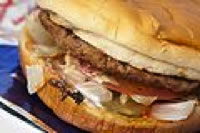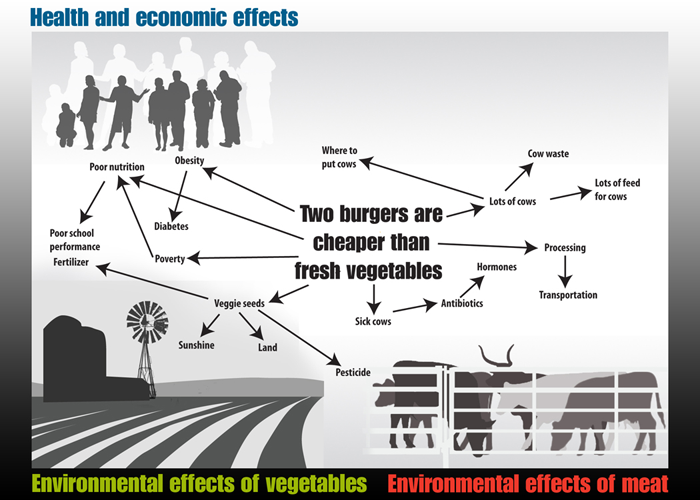Brainstorming a Topic
We need to write a paper about protecting the environment. This is a huge topic that needs to be narrowed down before we can start crafting our research question. The definition we got from the encyclopedia tells us that Earth Day is a day to learn how to protect the Earth from air, water, and soil pollution. We are going to use a few different brainstorming techniques in this lesson, but you don’t have to use all of them every time you do research. Using more than one technique, however, can sometimes help you make connections about your topic that you might not make if you use the same technique over and over.
Freewriting
Freewriting is a brainstorming technique to help you uncover your topic. When you freewrite, you should find a quiet place to work and take five to fifteen minutes (use a timer if you can) to write as much as you know about your topic. Don’t worry about grammar or spelling. Don’t read what you write and don’t stop until your time is up. When your time is up, read what you’ve written and circle or highlight any interesting ideas.
Let’s freewrite about our topic. Using your notes, write the phrase “Protecting the Environment” at the top. Now, take about five minutes and write everything you can think of about protecting the environment. Write as fast as you can and don’t stop to correct mistakes. If what you write brings up a question, write down your question. When you are finished, check your understanding.
You can write the answers to questions in your notes.
Instructions for Using the Take Notes Tool
- Click the Take Notes button in the left Epsilen navigation menu to open the Take Notes popup page.
- You may edit the Title or leave it as the title of the course.
- Enter your notes in the Content box.
- Click the Save button. You may now refer to these notes whenever you open the Take Notes popup page.
Protecting the environment
The environment needs protection from pollution. Factories, cars, and trucks pollute the air, boats and factories pollute the water, farming and factories pollute the soil. The dangers of soil pollution are many. Our food is grown in soil that can be polluted by overuse of fertilizer and pesticides. Fertilizer and pesticides can also contaminate the water. I saw a headline the other day that said that being a vegetarian is better for the environment than eating meat. How can that be if farming vegetables can hurt the environment? How does eating meat hurt the environment? Cattle have to be fed and that takes grain that is grown using pesticides. Cows have to be transported to the slaughterhouse to be killed and the trucks pollute the air. Are there other ways that eating meat damages the environment?
CloseAs you can see, I started very broadly writing about things that can damage the environment and ended up with questions about how what we eat can pollute the Earth. You might also notice that a newspaper headline is something that got me thinking about food and the environment. That’s why brainstorming is valuable; if you relax and let the ideas flow, your writing can go in some interesting directions.
Unlike a personal essay, though, in which you are the only source, your brainstorming for a research paper will need to include a little research as well. My freewriting uncovered some questions I have about how what we eat impacts the environment. Still, I don’t know much about the food industry. I do remember a movie that a friend told me about that changed the way he eats. It’s called Food, Inc. An Internet search for Food, Inc. takes me to the website for the movie, which has a preview trailer for the film.
Click below to watch the trailer for the movie, Food, Inc.
Source: Food Inc – Official Trailer, trailers, YouTube
Let’s use this movie trailer as a starting point for brainstorming more about our topic. Let’s start by re-watching the trailer a couple of times and focusing on the issues presented. Then we can brainstorm by listing.
Listing
Listing, another kind of brainstorming, is exactly what you think it is. Using your notes, write a list of as many issues from the trailer as you can remember. Don’t stop to think; just write everything you can remember about the movie trailer and any thoughts you have about the issues. Check your understanding below to see my list.
Corn everywhere
Bigger faster cheaper fatter
If you knew more about your food you wouldn’t want to eat it
Buy local
Buy organic
Food labeling
Cloning
E-coli in lettuce
Salmonella in peanut butter
Laws against images
Good healthy nutrient dense food
If you want it we will make it
Food like tobacco industry
Two hamburgers cheaper than fresh vegetables
Remember, our purpose is to write a research paper to inform the school about protecting the environment. Let’s cross out the issues in our list that don’t seem to be related to our purpose. Check your understanding below to see the revised list.
Corn everywhere
Bigger faster cheaper fatter
If you knew more about your food you wouldn’t want to eat it
Buy local
Buy organic
Food labeling
E-coli in lettuce
Salmonella in peanut butter
Laws against images
Good healthy nutrient dense food
If you want it we will make it
Food like tobacco industry
Two hamburgers cheaper than fresh veggies
From the issues that are left, we need to choose one issue. The best way to choose a topic for research is to find one that is interesting to you. After all, you are going to spend a great deal of time reading and writing about this topic! The topic I find most interesting is “Two hamburgers are cheaper than fresh vegetables.” What I’m curious about is why are they cheaper? After all, just getting the meat seems like it would cost quite a bit. The cow has to be fed, cared for, processed, ground into hamburger, and cooked, not to mention the cost of the bun, condiments, and vegetables that come with the burger. So, our broad topic is this:

Source: Hamburger, TheDapperDan,
Wikimedia Commons
Why are two hamburgers cheaper to buy than fresh vegetables?
You’ll notice that I turned the topic into a question because I want my research to answer this question.
Next, we will refine our question and make sure the new question suits the purpose of an Earth Day presentation.
Our task now is to narrow this broad topic into a question that is manageable (easy to answer with the right research) and suited to our purpose. Remember, our purpose is an Earth Day presentation. This means that we need to focus on how our topic is related to the environment. Let’s do some more brainstorming. This time, let’s use a mind map.
Mind mapping
For the third brainstorming technique, you will make a mind map. You will take a piece of paper and write your central topic in the middle of the page. Then fill the page with everything you can think of about your topic, writing anywhere you wish. After you are finished, draw lines between related ideas and assign them to a category. My mind map for this topic is included below.
Considering the cost of raising and processing cattle, why do two hamburgers cost less than one pound of broccoli?

Source: Mind Map, IPSI
When I look at my mind map, I want to draw arrows from the center question to each idea and draw arrows between related ideas. For example, I drew an arrow from the central question to “obesity” and from “obesity” to “diabetes.” Those ideas are related to the central question because we know that too much cheap, fast food can lead to obesity, and obesity can lead to diabetes. I also have arrows between “poverty,” “poor nutrition,” and “poor school performance.” I labeled that section “Economic and health effects” because that is what those ideas all have in common. These are interesting ideas, but they don’t really have anything to do with protecting the environment. I then drew arrows between all of the ideas related to the center statement and growing vegetables. I labeled that section “Environmental effects of vegetables.” Finally, I drew arrows between the rest of the ideas and the center question. I labeled that section “Environmental effects of meat.”
Looking at the mind map, I see that the majority of the ideas fall under the category “Environmental effects of meat.” I have many entries in that category: land for cows, transporting and processing cows, feeding cows, and tending to sick cows. All of those things must cost a great deal of money. I look again at the topic I brainstormed: “Two hamburgers are cheaper than fresh vegetables,” and I write my first draft of my research question: “Considering the cost of raising and processing cattle, why do two hamburgers cost less than one pound of broccoli?”
It’s an interesting question, and I’d like to know more about it, but I have to ask myself, does it fit my purpose? It really doesn’t, because the question I have asked is more of an economic question than an environmental question. I need to keep trying to come up with a question that deals with protecting the environment. In the next section, we’ll refine this question to a research question that fits our purpose.